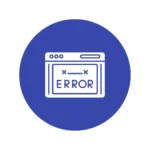Sending money to a friend is never easy when we use a cheque to do it. You have to draw a cheque in favour of your friend and submit it to the bank. When your friend has a bank account at another bank, it takes even more time to clear your cheque.
Electronic fund transfers are the solution to all the complexities of transferring money. It really makes fund transfers quite simple and effective.
If you are looking for an easy way to fund transfers, you are definitely in the right place. Let’s see what Electronic Fund Transfer (EFT) is and how to effectively use it in our daily lives.
When you want to give money to someone, the bank debits your account and credits it to the beneficiary’s account. Earlier, before the Core Banking Solution, sending money would involve doing separate transactions. One transaction debits your account,t and the other transaction credits the beneficiary account.
Sometimes, to get it paid, the cheque has to be sent physically to the parent bank. Imagine how much time it would take if you were in an area where the postal service is weak!
Core Banking has shortened the process, and now with the EFT, you can transfer funds anywhere, anytime, instantly.
What Is Electronic Fund Transfer?
An Electronic Fund Transfer is a fund transfer done electronically without the manual intervention of the bank’s employees. The system is fully automated and takes care of both accounts efficiently.
It is generally used for various transactions. It can be employees’ salary disbursal, sending funds to other people, or the recovery of monthly instalments.
The technological advancements in the banking sector have led to several developments in many areas. Whether it is in the retail sector or the corporate sector.
Now, people are less interested in visiting a bank branch and would rather do business at their convenience. In fact, with Internet banking, these services are available at your fingertips.
Examples of EFT
There are a whole lot of transactions that come under electronic fund transfers.
For instance,
- ATM card transactions
- Internet banking transactions
- Transactions through various financial applications such as BHIM Pay, Google Pay, PayTM, Paypal etc.
- Future debit or credit instructions such as utility bill payments, services toward loan recoveries, recurring payments of investment, salary payments, etc.
- Wire transfer between countries.
Who can use it?
It’s for everyone! To be precise, any individual can use it. For business purposes, it can be used as well.
Advantages of EFT
It is hassle-free for the end-user. For example, if you have to pay a phone bill every month, you can opt for monthly auto-pay with a service provider.
Once it is done, you don’t have to worry about next month’s bill payment. The system will keep on paying every month as long as you do not intervene to stop or cancel the recurring payment.
It saves your time as well as money. Believe me, the cheques you are getting from the bank are not for free. Though there may be a few cheque leaves that are free annually, it does cost you a few bucks if you use more than the limit provided as per your type of account.
So, EFT will do away with all of these matters.
No hard cash is involved, so completely user-friendly.
Disadvantages of EFT
Hardly, there are no disadvantages to using an EFT facility. The only thing is that it may charge you a penalty if your transaction fails due to insufficient funds. Other than that, EFT is a user-friendly, powerful financial tool.







